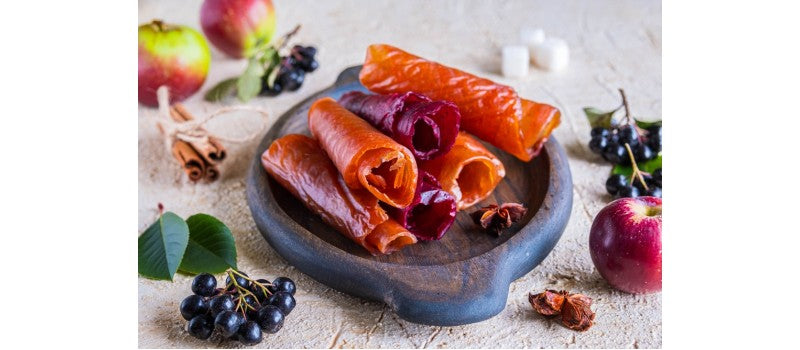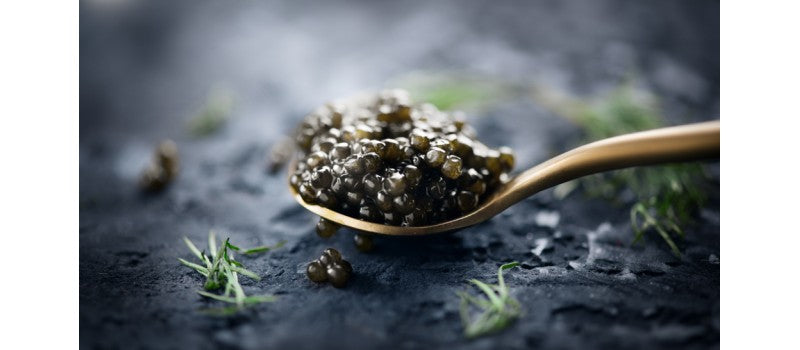
Russian Meat Jelly: A Savory Delight From The Russian Cuisine
13 min reading time

13 min reading time
A Classic And Well-Liked Delicacy In Russian Cooking Is Russian Meat Jelly, Sometimes Referred To As Kholodets Or Studen In Russian. It's A Salty Treat That's Frequently Offered As A Festive Dinner Or As A Chilly Appetizer. This Unusual Meal, Which Has A Gelatinous Texture And A Variety Of Meats, Might Not Be For The Timid, But It Is A True Example Of Russia's Rich Culinary History.
The History Of Russian Meat Jelly Extends Back To The Middle Ages. When Refrigeration Was Unavailable During The Winter, It Was Initially Developed As A Means Of Preserving Meat. The Dish's Distinctive Texture And Gelatinous Quality Result From Slow Simmering The Meat And Bones For A Long Time, Which Dissolves The Collagen In The Bones.
Russian Meat Jelly Usually Contains A Variety Of Cuttings Or Offal, Such As Trotters, Tails, Ears, Or Tongues, In Addition To Pig, Beef, Or Chicken. To Make A Flavorful Broth, These Ingredients Are Cooked For Several Hours With Vegetables And Spices. After That, The Broth Is Filtered And Transferred Into Molds Or Other Containers. It Is Then Refrigerated Until It Solidifies And Takes On The Consistency Of Jelly.
The Adaptability Of Russian Meat Jelly Is One Of Its Distinctive Features. Depending On Personal Inclination, It Can Be Cooked With A Single Type Of Meat Or A Combination Of Several Meats. For A Softer Taste, Some Varieties Even Include Fish Or Seafood. Furthermore, The Spices And Veggies That Are Utilized Might Differ From One Recipe To The Next, Offering Additional Levels Of Complexity And Flavor.
It's Customary To Top Russian Meat Jelly With Fresh Herbs, Such Parsley Or Dill, To Give It A Pop Of Color And Freshness. It Is Typically Served Cold, Cut Into Chunks, And Sometimes Served With Pickles, Horseradish, Or Mustard For A Flavor Contrast.
Russian Meat Jelly, Despite Its Name And Viscous Look, Is Neither Too Sweet Nor Dessert-Like. This Meal Is Delicious And Has A Rich, Meaty Flavor That Goes Nicely With Blini, Or Crispy, Thin Pancakes.
Russian Meat Jelly Has Become More And More Well-Known Outside Of Its Native Nation In Recent Years. It Is Currently Served In Russian Restaurants All Over The World, To The Delight Of Both Residents And Visitors. It Is A Remarkable Meal That Provides A Window Into The Diverse Culinary Traditions Of Russia Because Of Its Distinct Texture And Hearty Flavor.
The Various Varieties Of Russian Meat Jelly, Traditional Preparation Techniques, And Some Advice On Maximizing The Flavor Of This Delicious Treat Are All Covered In The Sections That Follow. Now Let's Delve In And Discover The Mysteries Of This Fascinating And Delectable Cuisine.
We Will Go Deeper Into The Intriguing Realm Of Russian Meat Jelly In This Post, Looking At Its Components, Cooking Techniques, Cultural Importance, And Some Delicious Variations. Whether You Are An Experienced Food Aficionado With An Interest In Other Cuisines Throughout The World Or You Are Just Trying To Broaden Your Culinary Horizons, Russian Meat Jelly Is Guaranteed To Provide A Tasty And Enjoyable Experience. Prepare Yourself, Therefore, For A Culinary Adventure Through The Core Of Russian Cuisine As You Savor The Spellbinding Aromas Of This Time-Honored Dish.
The Classic Meal Known As "Kholodets" Or "Studennyi," Russian Beef Jelly, Is An Important Part Of Russian Cuisine. Its Origins Can Be Found In Medieval Russia, When Cooks There Used A Variety Of Methods To Preserve And Use Every Component Of The Animal. Making Meat Jelly Allowed For The Utilization Of All The Byproducts That Would Otherwise Be Thrown Away, Including Bones, Hooves, And Other Gelatinous Portions.
In Order To Create A Rich And Tasty Gelatinous Liquid, The Components For Meat Jelly Are Slowly Simmered In Water For Hours. This Breaks Down The Collagen From The Bones And Connective Tissues. After That, The Jelly Is Put Into Molds—Usually The Shape Of A Loaf Or A Mason Jar—And Allowed To Harden In The Fridge. When The Jelly Cools And Solidifies, It's Ready To Be Consumed.
In The 18th And 19th Centuries, Russian Aristocracy And Upper-Class Homes Began To Favor Meat Jelly As A Meal. It Frequently Functioned As A Festive Centerpiece At Banquets And Special Events, Exhibiting The Chefs' Artistic And Culinary Abilities. The Dish Was Regarded As A Delicacy, Representing Elegance, Wealth, And Prestige.
Beyond Russia's Boundaries, Beef Jelly Is A Popular Food. Different Kinds Of Meat Jelly Are Also Loved And Enjoyed In Nearby Nations Including Belarus, Poland, And Ukraine. Every Area Adds Its Unique Flavor And Ingredients To Make The Cuisine Uniquely Its Own.
Modern Variants Have Emerged, Although The Process Of Preparing Meat Jelly Has Remained Basically Similar Over Time. In Order To Improve The Flavor, Some Chefs Experiment With Various Herbs, Spices, And Even Vegetables. The Core Of Meat Jelly Is Still The Same, Though, As It's A Tasty And Cozy Food That Unites People.
The Method Of Making Russian Meat Jelly, Or "Kholodets" As It Is Called In Russian, Is Labor-Intensive And Time-Consuming. This Flavorful Treat Is Generally Given As An Appetizer Or A Main Course During Festive Events. It Is Created With Gelatinous Meat Broth, Usually From Pork, Beef, Or Chicken.
Here Is A Step-By-Step Guide On How To Prepare Russian Meat Jelly:
Holodets, Or Russian Meat Jelly, Can Be Prepared And Served In A Variety Of Ways To Accommodate Personal Preferences. The Following Modifications And Toppings Can Improve The Taste And Appearance Of This Tasty Treat:
Although Pig Is Used To Make Kholodets Traditionally, Other Meats Can Also Be Used In Its Preparation. Using Chicken, Beef, Or A Mix Of Various Meats Are A Few Options. Every Meat Adds A Distinct Flavor And Texture To The Meal, Enabling A Wide Variety Of Flavors To Please A Variety Of Palates.
You Can Experiment With Different Veggies And Herbs In The Recipe To Give The Meat Jelly More Nuance And Complexity. To Improve The Flavor Profile, Carrots, Onions, Garlic, And Bay Leaves Are Frequently Added. These Components Give The Jelly A Hint Of Spice And Work As A Delicate Counterpoint To The Rich, Meaty Flavors.
Traditionally, Natural Gelatin Produced By Boiling Meat Bones And Cartilage Is Used To Make Kholodets. However, Powdered Gelatin Can Be Substituted For Convenience. Both Methods Result In A Wonderfully Jellied Product, Albeit The Textures Could Be Slightly Different. The Flavor Of Natural Broth Is More Authentic, But Utilizing Powdered Gelatin Is Quicker And More Convenient.
You Can Add Different Garnishes To Russian Meat Jelly Before Serving It To Make It Look Prettier. Popular Options Include Thinly Sliced Pickled Cucumbers, Lemon Wedges, And Chopped Fresh Herbs Like Parsley Or Dill. These Additions Not Only Improve The Dish's Appearance But Also Give It A Zesty, Fresh Taste That Goes Well With Its Savory Characteristics.
Russian Beef Jelly Is Frequently Consumed With A Range Of Customary Side Dishes That Offer Complementary Tastes And Textures. Russian Mustard, Horseradish Sauce, Sour Cream, And Dark Rye Bread Are A Few Typical Sides. The Addition Of Sharpness, Creaminess, And Crunch From These Condiments And Breads Improves The Whole Meal Experience.
Although Kholodets Are A Staple Of Traditional Russian Cooking, Some Chefs And Foodies Add Contemporary Tweaks To This Classic Dish. To Give The Dish A Tangy Bite, Try Adding A Splash Of Vinegar Or Worcestershire Sauce. A Cool Sweetness Can Be Added By Adding Finely Diced Vegetables Or Even Fruits Like Cranberries And Apples. For Those Looking For A Taste Of The Present Day, These Updated Versions Provide A Distinctive Take On The Classic Recipe.
Russian Meat Jelly, Or Kholodets, Is A Classic Delicacy That Is Noted For Its Distinct Flavors And Textures. It Is A Pleasurable Experience To Serve And Eat. Serving Meat Jelly Can Be A Fulfilling And Unforgettable Experience, Regardless Of Whether You Are Throwing A Joyful Event Or Just Want To Try Out New Culinary Customs.
Presentation Is Key To Improving The Whole Eating Experience When Serving Russian Beef Jelly. To Make An Eye-Catching Centerpiece Out Of The Jellied Meat, Think About Using A Fancy Mold Or Presentation Dish. Your Table Might Look More Refined With A Spherical Mold With Elaborate Features. For A More Individualized Touch, You Can Also Use Individual Serving Ramekins.
Russian Meat Jelly Goes Nicely With Many Different Types Of Sauces And Toppings. It Is Typically Served With A Dab Of Sour Cream, Horseradish, Or Mustard. The Acidic Contrast To The Savory Flavors Of The Meat Jelly Is Offered By These Condiments. The Overall Flavor And Texture Of The Meat Jelly Can Also Be Improved By Serving It With Crusty Bread, Fresh Herbs, Or Thinly Sliced Pickles.
Russian Meat Jelly Tastes Better Cold, Which Is How It's Normally Served. Before Serving, Make Sure The Dish Has Had Enough Time To Settle In The Refrigerator. A More Fulfilling Culinary Experience Is Produced By The Flavors Combining And Intensifying During The Chilling Process. Make Careful To Take The Meat Jelly Out Of The Fridge A Few Minutes Prior To Serving So It May Come To Room Temperature And Soften A Little.
Russian Meat Jelly Pairs Well With Many Different Types Of Beverages. Serve It With A Cool Glass Of Kvass, A Traditional Russian Fermented Drink Made From Bread, If You'd Rather Have Something Non-Alcoholic. For A More Classic Russian Dinner, You Could Also Serve It With A Crisp And Light Lager Beer Or A Chilled Vodka Shot.
There Is A Set Order In Which Dishes Are Often Presented When Dining In Russia. Russian Beef Jelly Is Usually Served As A Beginning Course Or Appetizer Before The Main Course. To Ensure Ease Of Ingestion, It Is Crucial To Serve The Dish With The Appropriate Equipment, Such As A Little Spoon Or Fork.
Russian Meat Jelly, Sometimes Referred To As Studen' Or Kholodets, Is A Distinctive And Age-Old Dish With A Specific Position In Russian Cooking. For Those Who Value The Subtleties Of Russian Cuisine, This Dish's Savory Flavor And Gelatinous Texture Make It A Great Joy.
With Its Lengthy Cooking Time And Meticulous Attention To Detail, It May Initially Seem Difficult To Create, But The Outcome Is Well Worth The Work. The Joy Of Mastering This Age-Old Recipe Is Incomparable. It Also Provides A Chance To Experience Gastronomic Inquiry And Cultural Appreciation.
Russian Meat Jelly, Whether It Is Consumed As Part Of A Celebratory Celebration Or On A Chilly Winter's Day, Is A Monument To Russia's Rich Culinary Traditions. This Meal Has Withstood The Test Of Time, Changing And Adjusting To Many Influences But Never Straying From Its Original Ingredients.
In Summary, Russian Meat Jelly Is A Delectable Delicacy That Perfectly Captures The Complexity And Richness Of Russian Cooking. It Is A Particularly Remarkable Dish Because Of Its Distinct Flavor Profile, Health Advantages, And Cultural Significance. So Why Not Sample Some Russian Meat Jelly And Go On A Gourmet Adventure?


